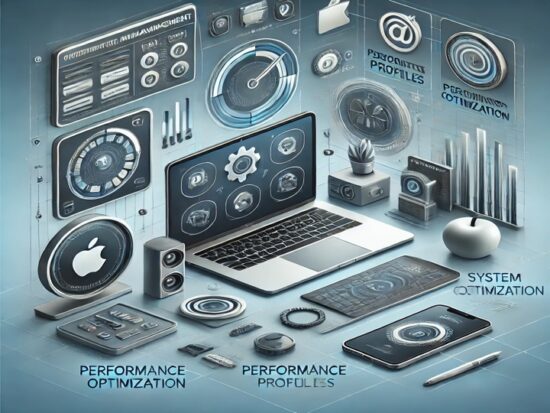Are Apple Silicon Macs worth considering, given the absence of future memory and storage upgrades, amidst the allure of enhanced security, portability, and Apple’s unmatched design aesthetics? Making the right choice when it comes to purchasing a Mac computer is more crucial than ever. With the advent of Apple Silicon, the company’s custom-designed chips, the landscape of Mac computers has changed significantly. While Apple’s transition to their own processors has brought unparalleled advancements in performance, security, portability, and design aesthetics, it has also sparked debates about the absence of future memory and storage upgrades in their latest lineup. This article explores the factors to consider when selecting the right Mac computer, considering the trade-offs between cutting-edge performance, features and the potential limitations.
The Apple Silicon Revolution
The introduction of Apple Silicon marks a monumental shift in the world of Mac computers. These custom-designed chips, based on ARM architecture, deliver remarkable performance improvements, energy efficiency, and enhanced security. The M-line chip, in particular, has garnered praise for its ability to run demanding tasks without breaking a sweat. It is evident that Apple has placed its focus on refining the user experience and optimizing performance with their proprietary processors.
The Trade-Offs
The introduction of Apple Silicon has ushered in numerous advantages; however, the lack of user-upgradeable memory and storage has emerged as a worrisome matter for prospective buyers. In the past, Mac users relished the liberty to enhance their device’s memory and storage as needed, ensuring that their computers stayed pertinent and capable of meeting evolving requirements. Nevertheless, Apple made a definitive decision to gradually transition away from this user-level memory and storage upgradability freedom, consolidating it into a unified, non-modifiable Logic Board. Consequently, the latest Apple Silicon lineup no longer provides this option, obliging users to adhere to their initially chosen configuration at the time of purchase.
Security and Optimization
One of the primary reasons behind Apple’s decision to forgo future memory and storage upgrades is the assurance of greater security and optimization. By tightly integrating the hardware and software, Apple can deliver a more stable and efficient computing experience. Additionally, the lack of user-accessible components reduces the risk of unauthorized modifications or tampering, making Apple Silicon Macs more secure by design.
Portability and Form Factor
Apple has always been at the forefront of innovative design, and their commitment to crafting sleek, slim, and lightweight devices continues with the Apple Silicon Mac computers. The compact form factor not only enhances portability but also adds to the aesthetics, making these Macs visually appealing and desirable. By sacrificing upgradability, Apple can create streamlined and tightly engineered devices that are not only powerful but also a delight to behold.
Future-Proofing Considerations
One of the key concerns for buyers contemplating an Apple Silicon Mac is future-proofing their investment. As technology advances rapidly, users may worry that their chosen configuration will not be able to meet their needs in a few years. This is particularly relevant in scenarios where users rely on resource-intensive applications or have demanding workflows that necessitate additional memory and storage.
The Right Mac for You
When making the optimal choice for a Mac computer, individuals must carefully assess their unique usage scenarios and long-term needs. While Apple’s integrated memory and storage options may prove sufficient for those with modest computing requirements, power users, content creators, and professionals engaged in resource-intensive tasks must prioritize selecting a configuration that can accommodate their foreseeable demands.
In this era of rapid technological advancements and enriched entertainment, digital cameras and smartphones have elevated the sophistication of photographs by incorporating higher megapixel counts. Similarly, applications and content creations have grown in complexity, resulting in accelerated space consumption and a heightened demand for memory bandwidth even in simple tasks. For instance, a MacBook Pro 2015 may consume a mere 3GB or less of memory upon reaching the desktop, whereas its 2023 counterpart necessitates over 6GB of memory for the same operation.
Closing Thoughts
Choosing the right Mac computer in the Apple Silicon era involves striking a balance between the impressive performance, security, portability, and esthetics that Apple offers and the potential trade-offs of limited future memory and storage upgrades. By carefully assessing individual computing requirements and taking into account the fast-paced nature of technology, users can make an informed decision that aligns with their needs and preferences. In the ever-changing landscape of technology, the quest for the perfect Mac continues, and it is essential to consider both the advantages and limitations before making the leap.




